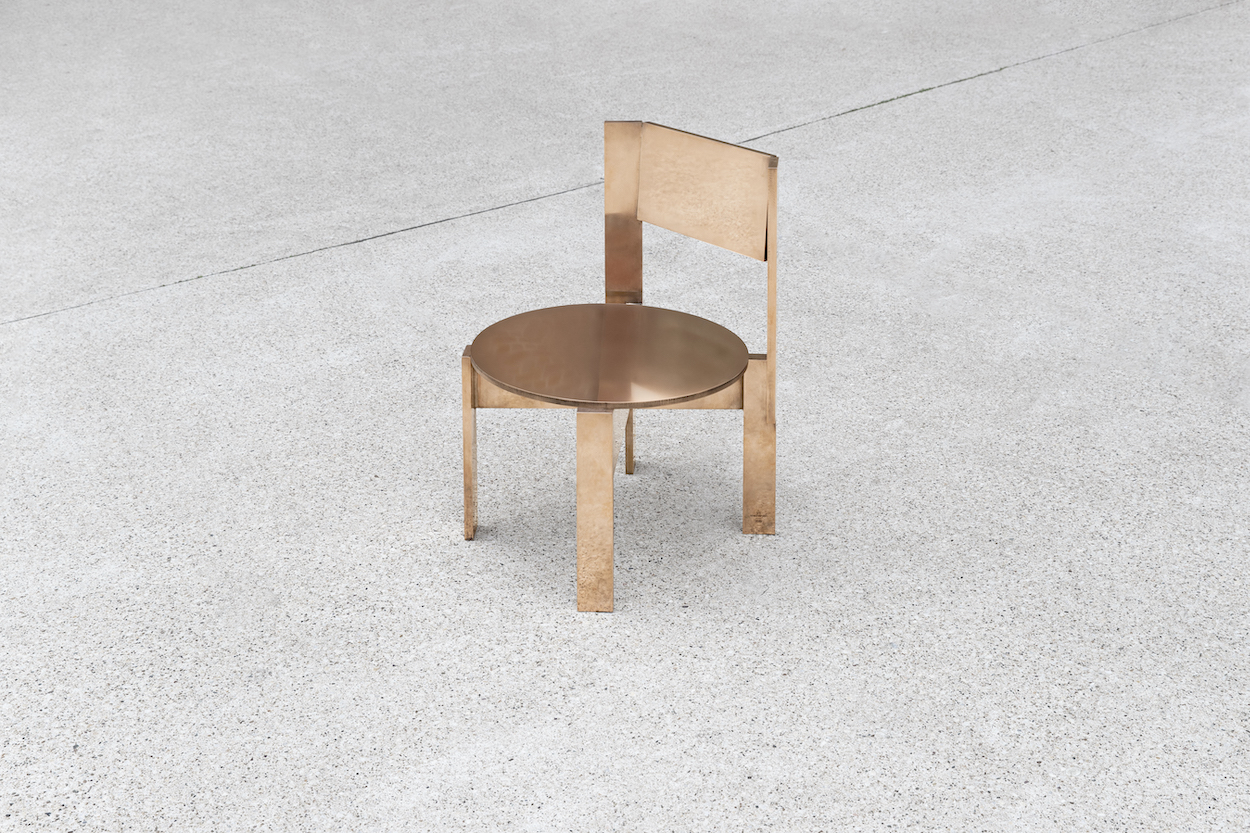
“C.19.1 chair,” edition (b), made from solid bronze. 2019.
Image courtesy of: Surface Magazine
For Noro Khachatryan, less is definitely more. The Armenian-born, Belgian-based designer is a master at blending architecture, product design, and craftsmanship into the everyday pieces he designs. Infusing a mathematical approach into his creations, Khachatryan simplifies objects down to their most basic level in order to create minimalistic silhouettes.
The designer allows the raw material to shine; he uses a graphic, reductive approach. He has realized that often times, it does not matter whether or not the materials are polished. He told Architectural Digest Middle East, “The materials play the main role in all my projects. I always try to understand their properties and essential character instead of trying to manipulate them into something ‘innovative’. It’s a recipe for success.”
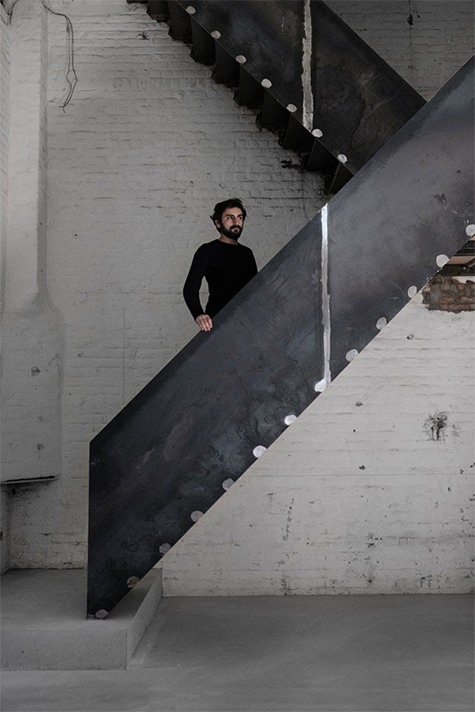
Inside the new, minimalistic space.
Khachatryan’s studio and apartment is located in an urban house in Mechelen’s city center. The building was a former clothing store that the designer personally renovated five years ago. Not far from Brussels, the majority of the designer’s clients are based either in Brussels or Antwerp so the location is perfect.
Image courtesy of: The Design Edit
Khachatryan approaches each project with an open mind; he finds inspiration in urban landscapes and classical architecture. He founded Studio Khachatryan in 2010 and for the past decade, he has worked on furniture designs, objects, and architecture simultaneously. Over the last ten years, he developed “an essential visual language based on simple geometries and rich material palettes.”
While his home and “home studio” remain in Mechelen, earlier this year marked a big turning point for the designer. Khachatryan teamed up with his longtime friend Harlan Levey to open a multi-disciplinary “cultural hub” in Brussels’ Molenbeek neighborhood. Merging art and design, this new space inside a 19th-century industrial building which was just what the designer was looking for!
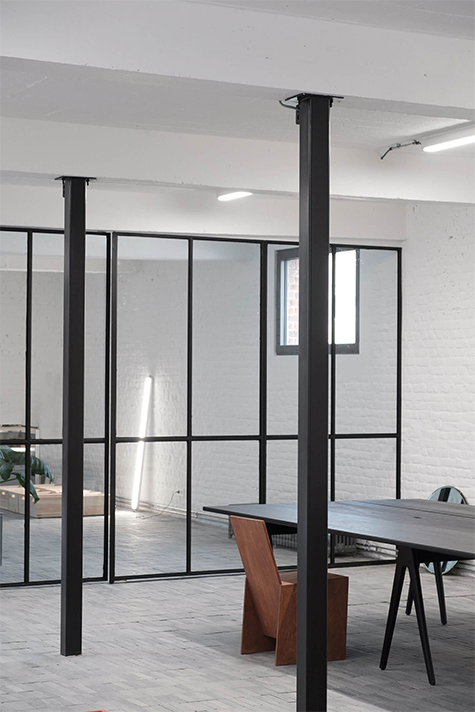
The new office space is a perfect space for all kinds of meetings.
Image courtesy of: The Design Edit
The new studio’s renovation was a labor of love. Khachatryan and American-born gallerist Harlan Levey arrived in Belgium around the same time twenty years ago. Since then, the duo and Levey’s partner, Winnie Kwok, have become quite close. Both had been envisioning opening a space in Brussels; they pooled their resources to try and find a building that would fit their specific needs. After visiting more than twenty locations, they came upon this space.
A selling point was the double-height exhibition hall for Harlan Levey Project’s immersive shows and space for a workshop. Completing the intensive renovation for the 4,800 square-feet space took two years. The building is now a merging of different elements that occur out of reviving certain features and introducing new ones. A beautiful switch-back welded staircase links the two spaces together… both functional and sturdy. While some areas were renovated, others only needed a fresh coat of white paint. The designer said, “I didn’t want to make a crazy statement but rather keep the industrial rawness of the space. For me, luxury can be achieved with low-budget materials that are durable. The walls we painted in white are made out of cement and will last a long time. It’s simple but effective.”
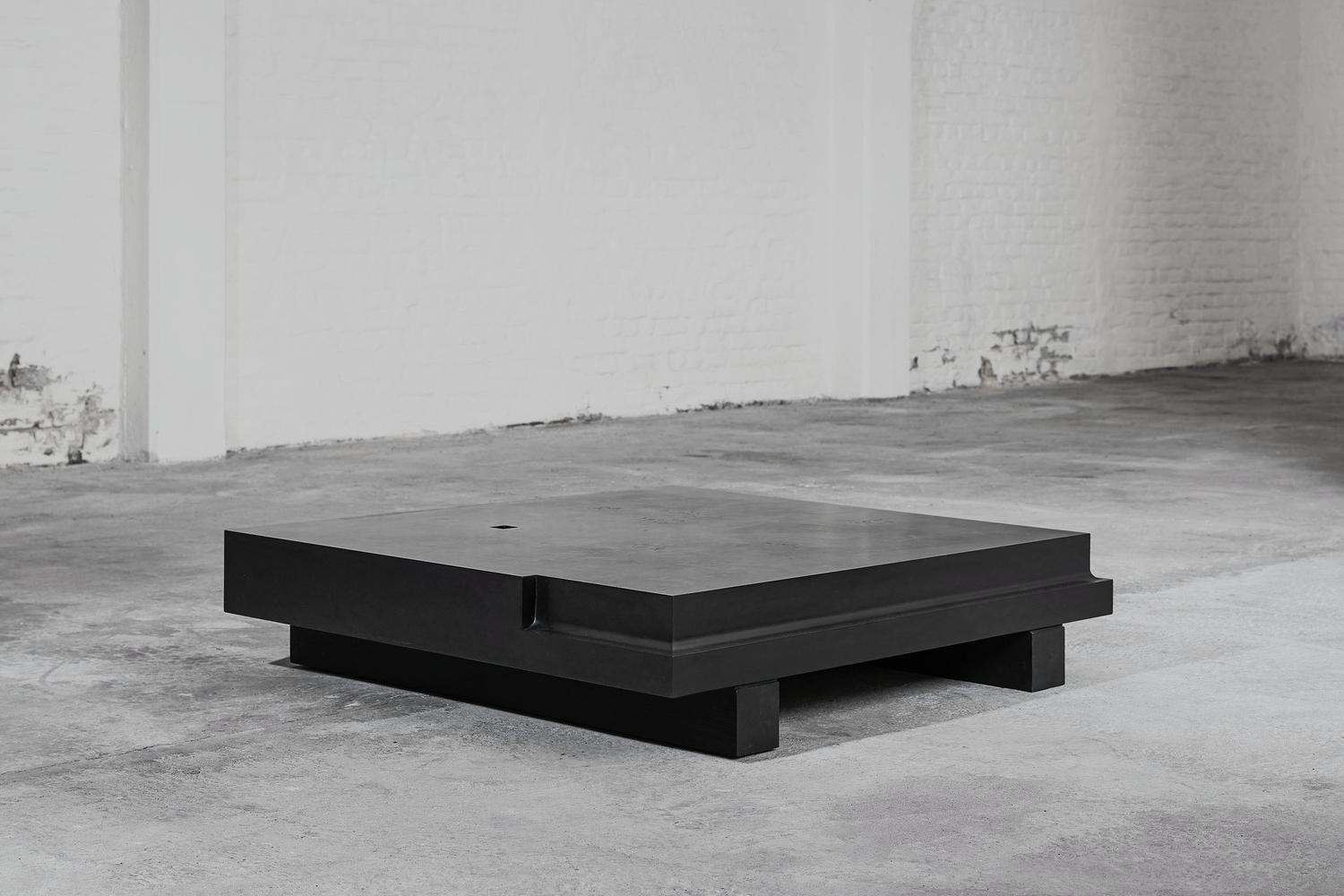
Part of the Meronyms Series.
The series is a collection of objects that arose from an interest in elements that can be found in classical urban architecture. The structures “reflect the relationship between interior and exterior within the city’s public spaces, and the way this relationship is often translated by materials.” The black monoliths are made from Noir de Mazy (Belgian black marble)
Image courtesy of: Studio Khachatryan
The new studio will allow Khachatryan to display his objects. Not specifically a showroom, “works in progress” will be presented so that they can be seen and refined over time. The upstairs space serves as the designer’s “homeroom” where he will showcase his pieces in a way that is pleasing to him. This organic approach will allow Khachatryan to sell directly from his studio rather than opening a separate gallery. The best part is that teaming up with Levey will allow the pair to exchange furnishings and art for one another. This enables both artists to complement their own space and in such, “tie” the entire complex together.
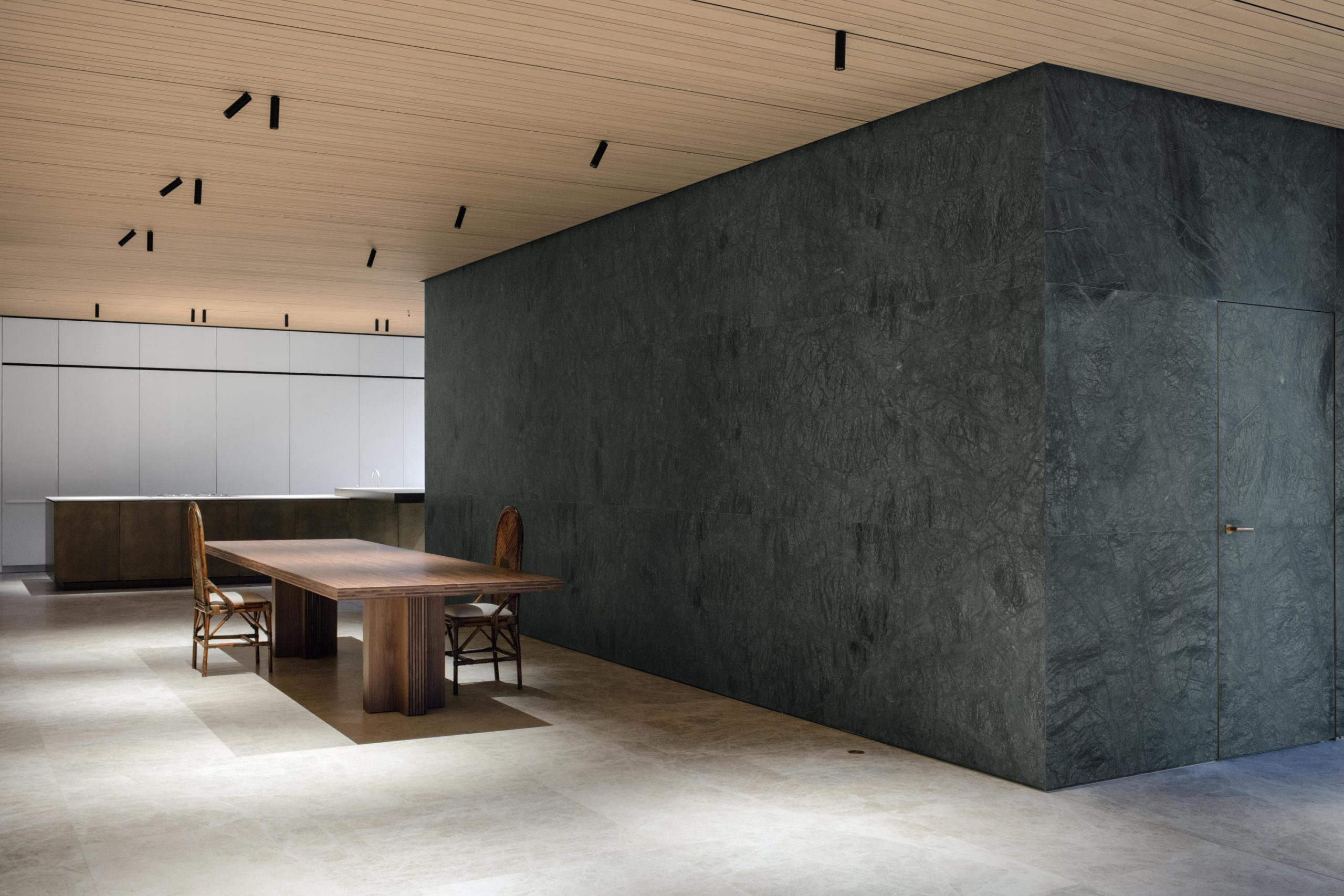
The Beirut penthouse apartment.
Image courtesy of: Frame Magazine
Belgium has been Khachatryan’s home for designing objects; and the Middle East has become the designer’s home for architecture. Last year, he completed a project he had been working on for three years… in Beirut. The ambitious penthouse project was beautifully executed; the process required a lot of energy, responsibility, and time. Luckily, the result was nothing short of perfection.